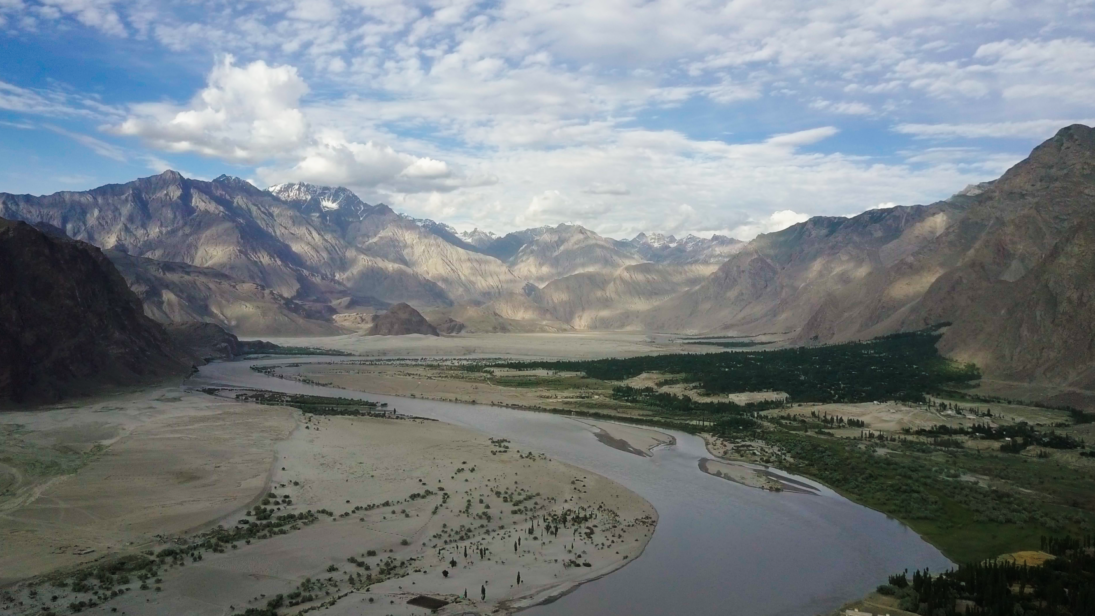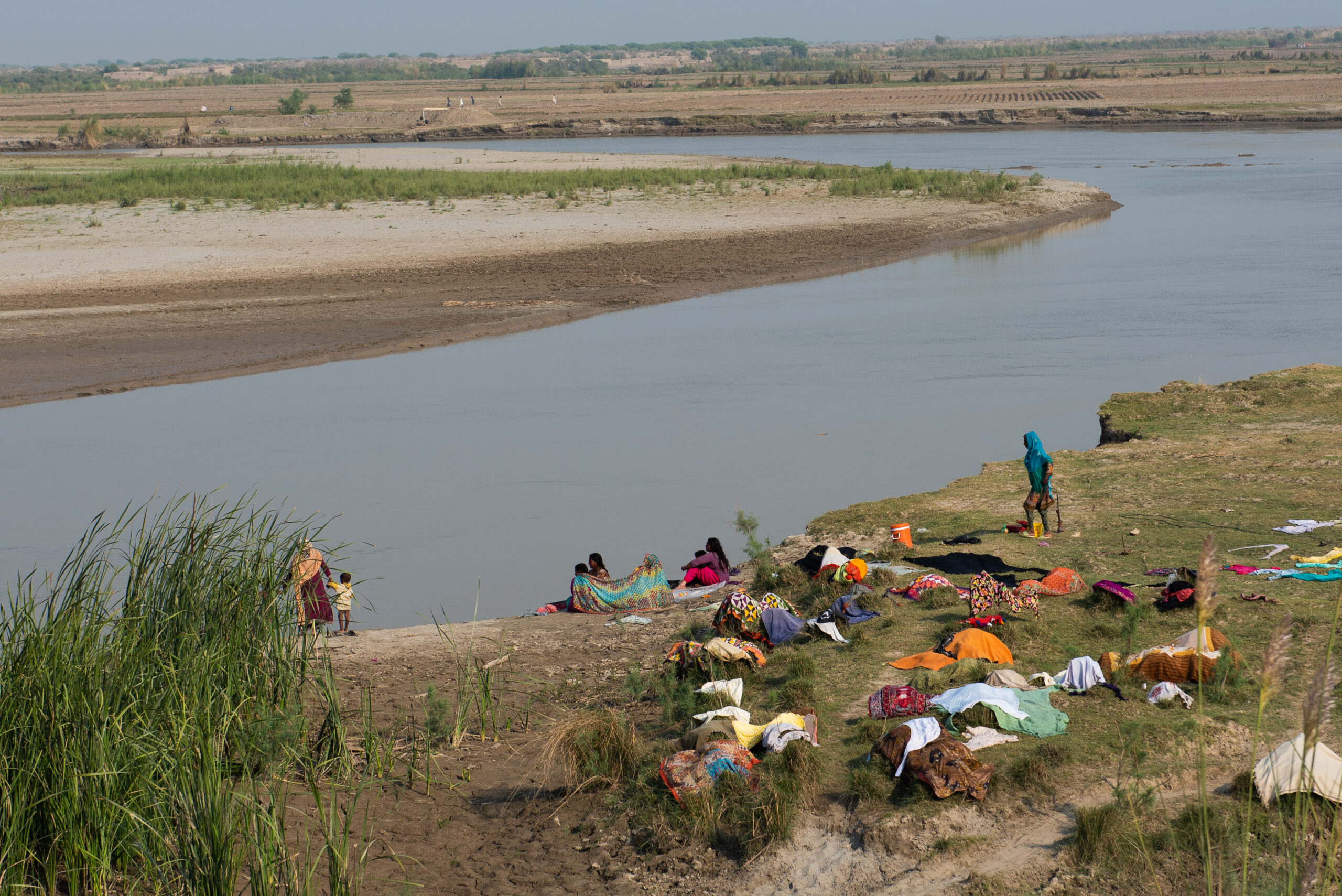
On August 30, 2024, India formally issued a notice to Pakistan seeking a review and modification of the Indus Water Treaty (IWT), citing concerns over shifting population demographics, agricultural demands, and the urgent need to accelerate clean energy development. The IWT, signed in 1960, governs water sharing from the Indus River system between the two nations. The treaty allocates 19.48 percent of the river waters to India and 80.52 percent to Pakistan, with India holding exclusive rights over the eastern rivers—Sutlej, Beas, and Ravi—and Pakistan receiving the majority share from the western rivers—Indus, Jhelum, and Chenab. Despite the treaty’s historical significance as a cooperative agreement, India argues that it disproportionately benefits Pakistan, complicates project approvals, and inadequately addresses modern challenges like climate change. With increasing legal, environmental, and geopolitical concerns between India and Pakistan, revisiting the IWT’s central tensions and its need for reform is integral.
Legal Disputes over Hydroelectric Projects
Since its inception, the IWT has been heralded as a successful water-sharing agreement. However, growing domestic water needs, coupled with an intensifying climate crisis, have led Indian policymakers to push for reform. Calls for modifications date back to 2005, gaining momentum in 2016 with disputes over the Kishenganga and Ratle hydroelectric projects. The Kishenganga project involves diverting water from the Kishenganga River to generate electricity before returning it to the river, which Pakistan claims affects downstream flows. Similarly, Pakistan has objected to the Ratle project over its potential impact on water availability. These disputes have resulted in significant delays, causing substantial financial losses and escalating project costs for India. Investors often hesitate to commit to such projects due to ongoing litigation, fearing risks to their investments. For instance, the Ratle project was initially awarded to GVK Industries, but the contractor eventually withdrew because of the prolonged legal uncertainties surrounding the project.
Despite the treaty’s historical significance as a cooperative agreement, India argues that it disproportionately benefits Pakistan, complicates project approvals, and inadequately addresses modern challenges like climate change.
The IWT’s Article IX outlines a three-tiered resolution mechanism for such disputes: the Indus Waters Commission, a Neutral Expert, and a Court of Arbitration. India advocates for adhering to the Neutral Expert process, citing efficiency and reduced external involvement. Conversely, Pakistan prefers the Court of Arbitration, which allows it to challenge projects like Kishenganga and Ratle with potential stay orders. India argues that this dual-track approach—invoking both the Neutral Expert and the Court of Arbitration—undermines the treaty’s intent and delays vital projects. In 2016, the World Bank, as the treaty’s designated mediator, attempted to facilitate a resolution by appointing both a Neutral Expert and a Court of Arbitration simultaneously. This decision drew criticism from India, which argued that it violated the treaty’s established dispute-resolution mechanism, which prioritizes Neutral Experts first. Ultimately, the Court of Arbitration was convened, a move interpreted by India as siding with Pakistan. This prolonged the disputes, further delaying the implementation of critical hydroelectric projects. India, therefore, demands a modification to the treaty that would streamline its dispute resolution mechanisms. By reducing third-party interventions, India seeks to accelerate project development and lessen dependence on entities like the World Bank, which oversees treaty implementation but has faced criticism for inconsistent mediation efforts.
Climate Challenges to the Indus Basin
Beyond project implementation challenges, the Indus basin is grappling with mounting pressures from climate change, with rising temperatures expected to exacerbate water scarcity for both India and Pakistan. Approximately 25 to 30 percent of the basin’s water originates from glaciers and snowmelt, making it acutely vulnerable to climate variability. Erratic monsoons and accelerated glacial melting are disrupting flow patterns, with projections indicating a 50 percent water deficit by 2030. Global climate models indicate that the Indus basin has already experienced increased rainfall. These climatic shifts pose significant threats to agriculture and domestic water supplies in both India and Pakistan, underscoring the urgent need to adapt the Indus Waters Treaty to contemporary challenges.
In 2021, an Indian parliamentary committee report formally recommended revising the treaty to address the impacts of climate change—a proposal reiterated in January 2023 when India served Pakistan with a notice seeking modifications. The document emphasized incorporating “lessons learned over 62 years” to address disputes efficiently and equitably. India’s specific concerns include Pakistan’s opposition to Indian hydroelectric projects, which India claims are well within its treaty-sanctioned rights. Furthermore, India has called for revising the treaty’s disproportionate allocation of water to better address its growing domestic needs and increasing climate change challenges, particularly in water-scarce states like Punjab, Haryana, and Rajasthan.
India has underscored its need to optimize resource use for clean energy generation and irrigation in climate-vulnerable regions, particularly in Ladakh and Rajasthan. However, Pakistan remains apprehensive, often interpreting these developments as attempts to undermine its water security.
Pakistan’s Objections to Modification
The Indus River Basin is indispensable to Pakistan, supplying 90 percent of its agricultural output and contributing approximately 25 percent of its GDP. As the lower riparian state, Pakistan is heavily reliant on the uninterrupted flow of the Indus, viewing any reduction in its water share as a direct threat to its survival. After the Uri attack in 2016 and the Pulwama attack in 2019, the Indian government escalated rhetoric about abrogating the treaty, asserting that “blood and water cannot flow together.” Such rhetoric, rooted in deep historical mistrust, has led Pakistan to strongly oppose India’s proposed modifications to the IWT, citing critical concerns about its potential impact on the country’s security and economy. Furthermore, Pakistan views India’s actions in Jammu and Kashmir, including the abrogation of its special status, as part of a broader strategy to assert control over water resources. These geopolitical tensions amplify existing disagreements, making cooperation elusive.

In February 2024, Pakistani media and political figures frequently accused India of engaging in “water terrorism,” particularly in relation to infrastructure projects like the Shahpurkandi barrage on the Ravi River, which they claim is aimed at controlling water flow to exert political pressure. However, this narrative has been challenged by both sides in the past. In 2010, Pakistan’s former Indus Waters Commissioner, Jamaat Ali Shah, stated that Pakistan was receiving its full share of water under the treaty and that India had the right to construct dams within its allocated share. His remarks drew sharp criticism in Pakistan, reflecting the sensitivity of the issue.
In 2010, Pakistan’s former Indus Waters Commissioner, Jamaat Ali Shah, stated that Pakistan was receiving its full share of water under the treaty and that India had the right to construct dams within its allocated share. His remarks drew sharp criticism in Pakistan, reflecting the sensitivity of the issue.
Critical Inefficiencies and the Way Forward
The IWT, once a symbol of cooperation, now stands at a crossroads. Climate change, legal disputes, and historical mistrust have exposed its limitations, and for the treaty to remain relevant, India and Pakistan must prioritize collective survival over their political rivalry. A revised IWT could integrate climate resilience measures, optimize resource allocation, and streamline dispute resolution.
Both countries should first take essential steps domestically towards this shared goal. While Pakistan alleges that Indian hydropower projects on western rivers disrupt downstream flows and threaten irrigation needs, it has failed to address critical inefficiencies in its own water management. Pakistan continues to rely on an outdated, British-era canal system, with a significant portion of its IWT-allocated water wasted due to mismanagement and corruption within institutions like the Water and Power Development Authority (WAPDA). Instead of modernizing its irrigation infrastructure, the establishment has often resorted to blaming India, using accusations of “water terrorism” to divert attention from its own shortcomings in governance and resource management. Modernization of water infrastructure and governance reforms are essential steps toward mitigating domestic inefficiencies in Pakistan. On India’s part, greater transparency and assurances about equitable water distribution could address Pakistan’s apprehensions.
Experts on both sides acknowledge that collaborative water management can lead to more efficient use of water resources, reducing wastage and ensuring that water is available during critical agricultural periods. Such cooperation can help in mitigating the impacts of droughts and floods, thereby stabilizing agricultural outputs. Ultimately, a cooperative framework that balances national interests with the pressing realities of climate change could transform the Indus Waters Treaty from a source of contention into a cornerstone of peace in South Asia.
source : southasianvoices
